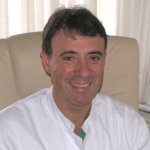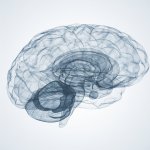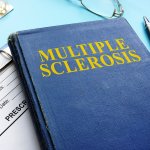
PC diagnoses Alzheimer's better than physicians
Standard computers can be taught to diagnose Alzheimer's disease from brain scans, according to researchers at the Wellcome Trust Centre for Neuro-imaging at University College London.

Standard computers can be taught to diagnose Alzheimer's disease from brain scans, according to researchers at the Wellcome Trust Centre for Neuro-imaging at University College London.

A specialist in radiology and neuroradiology, Dr Birgit Ertl-Wagner is senior physician for teleradiology at the Institute for Clinical Radiology, in Grosshadern University Hospital, Munich.

Surgery in the lower pelvic region often involves injury to or severing of nerve tissue. As in chronic diseases of the nervous system, the result can be pain, sensory disturbances or loss of function. Up to now the poor view of the nerves, partially formed of fine interwoven networks, has been one of the major problems – exacerbated by the strict division of skills between neurologists and…

In Johns Hopkins therapeutic radiology, we perform 2,600 procedures in neurointervention and 14,000 peripheral interventions each year, totalling over 16,000 image-guided procedures a year in 14 rooms. We changed our approach to image guided therapy in June 2001, when we installed a new O.5 mm multidector CT (Aquilion, Toshiba America Medical Systems) and two 3D visualization workstations (Vital…

Sonography is an increasingly used examination procedure for the diagnosis of illnesses of the hand, especially of the soft tissues. Sonoanatomic assessment of the functional structures (Tab. 1) sometimes allows the exclusion of various differential diagnoses. However, this requires quite a bit of experience on the part of the examiner. The assessment of the peripheral nerves can be difficult -…

Echo-enhanced ultrasound is a newly available imaging modality for use in the differential diagnosis of pancreatic tumours. Ductal carcinomas are often hypovascularised compared with the surrounding tissue. On the other hand, neuroendocrine tumours ar hypervascularised lesions. Tumours associated with pancreatitis have a different vascularisation pattern depending upon their inflammation and…

Czech Republic - In 2001, when doctors at the Motol Faculty Hospital first saw Dusan Matras, he was diagnosed with a thyroid gland problem. However, they later found he had a tumour. Six years later, Dusan has become the first in the world to undergo a unique surgical procedure on the vertebral column in the neck area.

TREAT-NMD (Transnational Research in Europe - Assessment and Treatment of Neuromuscular Diseases) is a European Union funded Network of Excellence launched on January 1st 2007 with the aim of improving treatment and finding cures for patients with neuromuscular diseases.

If something doesn't fit we make it fit, and if it doesn't exist we invent it: Pragmatism combined with imagination and idealism are the foundation stones of groundbreaking inventions that improve daily life in medicine.

Four times a year, the “Leica Scientific Forum — Advances in Life Science” offers top-class lectures, with eminently respectable speakers in the field of medicine like Noble prize winner Professor Dr. Erwin Neher from the Max-Planck-Institute for Biophysical Chemistry, Göttingen, who was guest speaker at the last Forum this year on December 5. The Forum – which takes place in Heidelberg…

Among ventilation advances demonstrated at this year's European Society of Intensive Care Medicine Congress, held in Barcelona, the combination of the SERVO-i ventilator with Neurally Adjusted Ventilatory Assist (NAVA) provoked considerable interest because the system allows ventilation to be controlled by the patient's own respiratory centre in the brain. During a discussion with Daniela…
The 2006 Eppendorf and Science prize, the annual international research prize of US$25,000 has been awarded to Doris Tsao PhD, of the USA.

As the German Society of Neuroradiology 40th annual meeting approached (Venue: Dresden. 31 August - 3 September), Professors Martin Schumacher (Freiburg), President of the German Society of Neuroradiology (GSN) and Rüdiger von Kummer (Dresden), the meeting's President, examine the history and potential in this medical field


Across Europe there are different answers to the question of who should manage intensive care. In Germany the issue is linked to a discussion on which medical field could claim surgical intensive care for itself.
USA - Pressure and inflammation caused by a herniated disc in the lumbar spine, and particularly painful sciatica, can be relieved using a neuroradiological technique rather than surgery, according to Dr Jeffrey A Stone, head of Interventional Neuroradiology at the Georgia Medical College, who reported on his procedure at the 44th annual meeting of the American Society of Neuroradiology in San…

Sweden - The Swedish Brain Foundation has received a donation of SEK 250 thousand (approximately e27,593) to support advanced research and development, from GE Healthcare, based in Uppsala.

The Working Party for Clinical Neuroscience, set up two years ago, ...

A processing system said to pick up cardiac sounds and correlate these with any related abnormalities, e.g. valve defects, stenosis, fibrillation, septal defect, etc, has been developed by the US firm Biosignetics Corporation.
Injury to the brain and spinal cord cause permanent damage because, unlike bone and skin tissues, they lose the ability to repair themselves soon after birth.

Christopher Pryce, PhD, describes a promising test that can predict the onset of Alzheimer's disease some two years earlier than currently available tests can determine. Furthermore, the test can be used in non-human primates in order to research the neurobiology and pharmacology of such neurodegenerative illnesses. Dr. Pryce is conducting preclinical research with this test together with…

The DynaWell L-Spine, a compression harness that axially loads the lumbar spine in the supine position, has no magnetic parts, so can be used with most CT and MRI scanners.

More than 80 billion neurons, trillions of synapses and almost 6 kilometres of neural pathways: The brain is an anatomical masterpiece – and still puzzles science. Keep reading to find out about latest research and therapies of brain diseases.

Many different forms, unclear origins: Multiple sclerosis (MS) is one of the most common neurological diseases that often leads to disability in those affected. Read more about current research and therapeutic approaches to MS.

Neural networks are emblematic of complex systems, so it's no surprise that the field of neurology is eclectic and intricate, too. Main challenges for neurologists are therapies of and research on stroke, seizures, movement disorders such as Parkinson's disease, autoimmune disorders such as multiple sclerosis and dementias such as Alzheimer's disease.